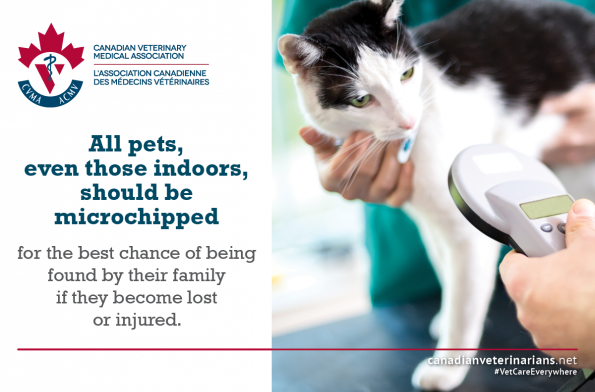
It’s National Pet Identification Week — the perfect time to make sure you’ve taken every precaution to be reunited with your pet if he or she becomes lost. The American Society for the Prevention of Cruelty to Animals (ASPCA) recently found that only 33 percent of pet parents admitted to always having ID tags on their dogs and cats.
In addition to that crucial step, pet owners should also have their furry friend microchipped. Collars with pet identification are accessible to anyone who finds your lost pet. But, tags can become hard to read, and collars can be broken or removed. Microchipping your pet is a method of permanent identification. Microchips cannot be easily misread, and the permanent identification number is tamperproof. The information about the pet and owner is usually readily retrievable.
A microchip is a very tiny transponder that is encoded with a unique identification number. Before insertion, the sterile microchip is scanned in the package to confirm that the identification code of the transponder matches that shown on the label of the bar code on the package.
The procedure for microchipping your pet is similar to that of vaccinating. Some of the loose skin between the shoulder blades is gently pulled up, and the application needle is quickly inserted. The trigger is depressed, which injects the microchip into the tissues. Once the chip is inserted, the pet is scanned to ensure that the chip is reading properly.
The procedure is fast, safe, and generally painless, even in puppies and kittens. Some owners choose to have the microchip inserted when the pet is spayed or neutered.
Once your pet has been microchipped, you must register it with the appropriate agency. Your veterinarian will provide you with the relevant information and documents. Be sure to keep your contact information updated. If your pet is lost and recovered, this information can be used to reunite you with your pet. Most, if not all, humane societies and animal shelters now have microchip readers, and all stray and injured animals are routinely scanned.
Even if you’re told at the time of adoption that your new pet has been microchipped — bring him or her to a vet and have them double check. You want to make sure that a) the chip has actually been inserted and b) that they have your information on file locally. Remember to always update your information when you move or change phone numbers, emails etc.
